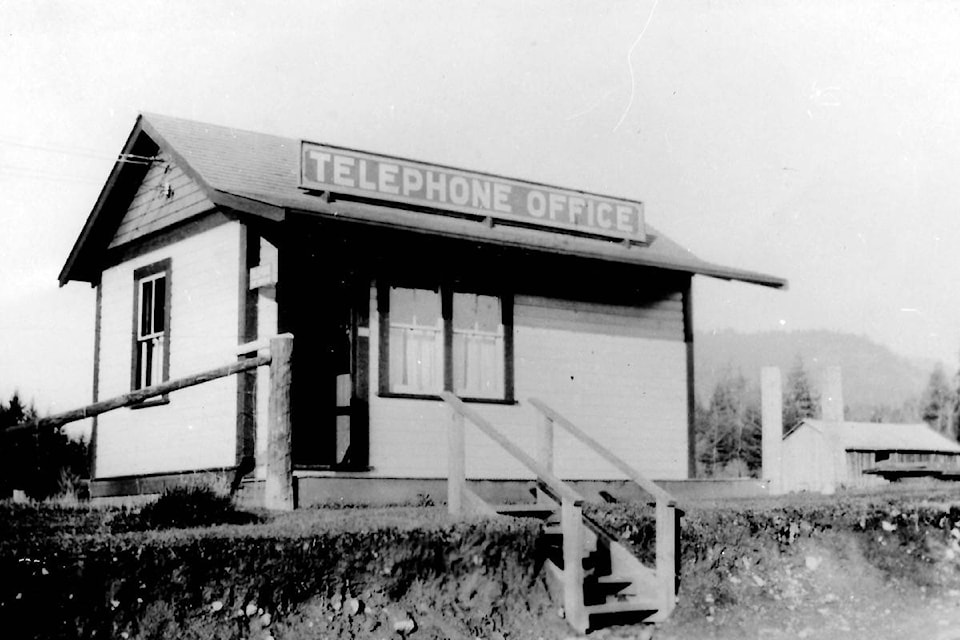Sooke’s telephone office looks kind of cute here, perched on the bank upside of what was then Sooke Road, between the junction of Sooke River Road and the bridge. The frame structure was built in 1932, after B. C. Telephone Company had taken over the service from the federal government.
When this snapshot was taken in the mid-1930s, there were 40 customers of the service, according to a Milne granddaughter, Margaret Lang, who gave us the photo. Imagine only 40 businesses and households that had telephones then, but perhaps not so strange when you consider that there were only 600 residents in the entire district.
At right of the office, you can see one of the Milne barns, in an area that is now used as a sports field, the Fred Milne Park.
In the 1930s, Sooke Road followed a slightly different route than today, with the main road from Saseenos following what is called Edward Milne Road now. The road had more curves, and swung a bit closer to the waterfront, along the route which is now the lower part of Derbend, where it accessed the Sooke River bridge of that day.
Actually the first telephone operator was Ella Milne, who began working with the switchboard in the Milne family home, before the separate office was built. When Ella married, her sister Agnes (Nan) took over the role. As the community grew, a series of young women found employment there as operators, eventually working in shifts around the clock.
Women that I can think of who worked as operators included Irene Cains, Norma (Stolth) Lajeunesse, Lorraine (Duncan) Helme, “Billie” Davidson, Colloda Sandberg, Ragna McClimon, Agnes Collins, Betty Gibson, Alison Dunn, and Sharon Dunn.
In 1960, with the coming of dial phones instead of magneto, operators were no longer required. At the same time, though, there was a loss in friendliness, as operators were known to go out of their way to be helpful to callers in the less-technical, less-sophisticated society of that day. Long and short rings and numbers, such as 28Y, became history.
In 1948 chief operator Nan Milne married her longtime suitor, Andre Robillard, who ran the greenhouses across the river at the old Belvedere Hotel site, and finished out her B. C. Telephone Co. career as Mrs. Robillard.
•••
Elida Peers is the historian of Sooke Region Museum.
